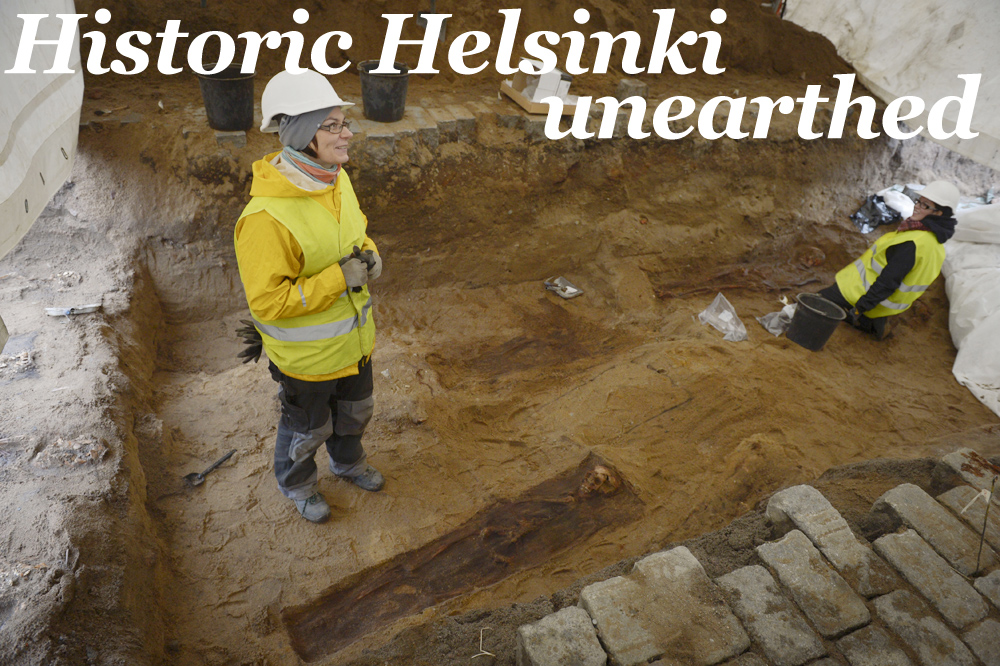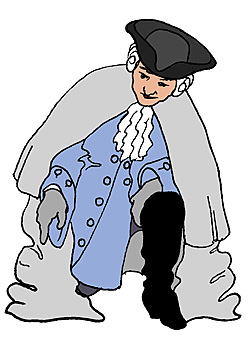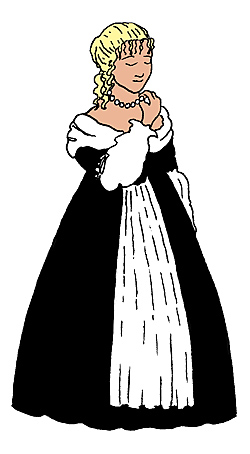
Helsinki City Museum studied part of the old cemetary under the Senate Square in archeological excavations last autumn.
- Photos Kimmo Brandt - Pictures Jaana Mellanen
 An archaeological excavation has been ongoing in the inner courtyard of the Presidential Palace in Helsinki since January 2013. A renovation of the Palace has given an opportunity for Finland’s National Board of Antiquities to take a closer look at the history of Helsinki in the former bourgeoisie quarters, now buried under the development around Helsinki Market Square.
An archaeological excavation has been ongoing in the inner courtyard of the Presidential Palace in Helsinki since January 2013. A renovation of the Palace has given an opportunity for Finland’s National Board of Antiquities to take a closer look at the history of Helsinki in the former bourgeoisie quarters, now buried under the development around Helsinki Market Square.
The first buildings at the site of the Palace’s inner courtyard were destroyed in the devastating 1808 fire of Helsinki. The site came to accommodate the grandiose building and home of Helsinki’s richest merchant in 1814. After many expansions, the Heidenstrauch Palace became the official residence of the President of Finland in the 1920’s.
Previous excavations at the site have discovered artifacts typical of the 17th and 18th centuries, as well as evidence of gardening and pigs kept at households. The current excavation will continue to March 2013, to be followed by an analysis of the findings.
Helsinki City Museum had last autumn the unexpected and happy opportunity to study part of the old cemetery under the Senate Square – thanks to a rusted district heating pipe that burst in September.
Most people in Helsinki are not aware of the fact that we literally dance on the graves of our ancestors while attending concerts and happenings on the Senate Square. From the 1640s to the end of the 1820s the church of the city and the cemetery were located in the area.
As congestion of the small cemetery and the smell from shallow graves became unbearable in the 1780s, a new cemetery was established in 1790 at the current location of Vanha kirkkopuisto Park along the Bulevardi Street. The old wooden Ulrika Eleonora church was demolished in 1827 and the old churchyard was covered by the grand Senate Square with the magnificent new Cathedral.
 The excavations that began at the end of September in the pipe trench started at the eastern and middle section of the Senate Square where sections of base wall belonging to two different buildings and some trivial artefacts were discovered, the City Museum reports on its web-site. The main focus of the excavations was on the eastern section of the square where the old cemetery is located.
The excavations that began at the end of September in the pipe trench started at the eastern and middle section of the Senate Square where sections of base wall belonging to two different buildings and some trivial artefacts were discovered, the City Museum reports on its web-site. The main focus of the excavations was on the eastern section of the square where the old cemetery is located.
Almost 260 bodies were revealed and carefully documented. The majority of the deceased were reburied in the same location only deeper beyond the reach of the site’s diggers. Archaeologists specializing in osteology, the study of bones, carefully lifted the bones of approximately 40 bodies for laboratory studies. The age, height and gender of the deceased were determined.
The bones were studied for traces of diseases in order to document the history of diseases of Finns. The study of old bones also benefits medicine, providing information, among other things, on the evolution of the tuberculosis bacterium and the link between diseases and environmental factors. Once examined, the deceased that have undergone the osteological analysis will be reburied in one of Helsinki’s cemeteries.



